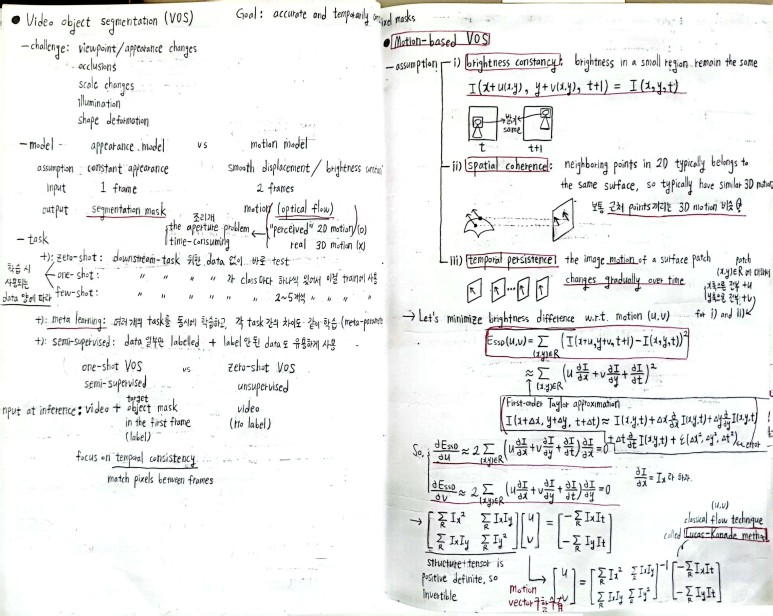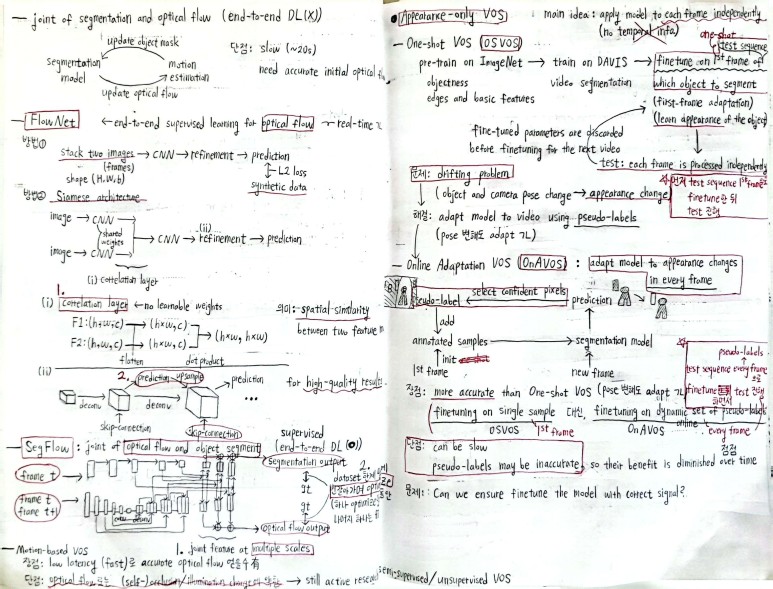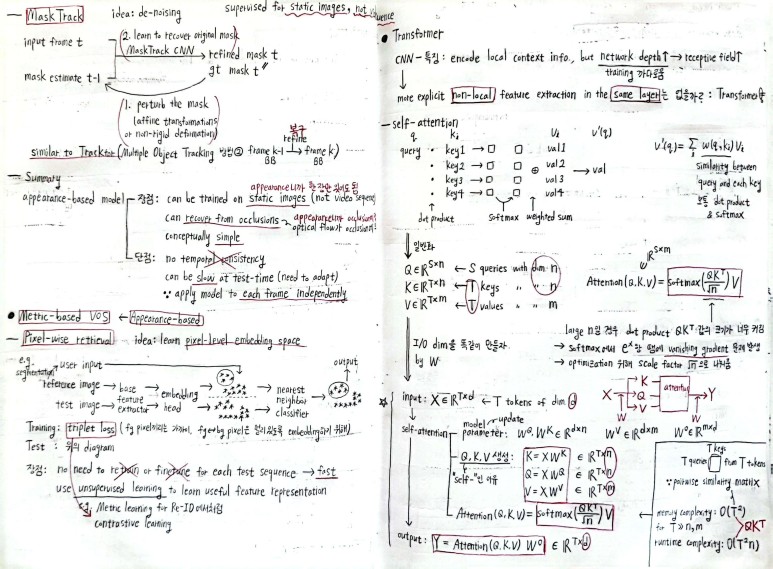Video Segmentation
뮌헨공대 (Technical University of Munich)에서 공부한
[IN2375 Computer Vision - Detection, Segmentation and Tracking] 컴퓨터비전 노트 정리
Motion-based VOS
Motion-based VOS
장점 : fast, accurate to obtain optical flow
단점 : optical flow만으로는 occlusion 및 illumination change에 취약
assumption
- brightness constancy : brightness in the small region remains the same
- spatial coherence : neighboring points in 2D are in same surface, so have similar 3D moton
- temporal persistence : motion changes gradually over time
+) assumption 1., 2. 이용해서 classic Lucas-Kanade method로 optical flow motion (u, v) 구할 수 있음
FlowNet (optical flow)
- architecture : two images를 siamese network에 넣음
- correlation layer : spatial similarity between two feature maps
- refinement : deconv. 만 하는 게 아니라 upsampled prediction과 skip-connection을 더함 for high-quality upsampling
SegFlow (joint of optical flow and segment)
optical flow output과 segmentation output에 대해 둘 중 하나는 freeze하여 번갈아가며 optimize
Appearance-only VOS
Appearance-based VOS
- 장점 : appearance라 static image로 훈련 가능 / optical flow와 달리 occlusion에 대응 가능 / simple
- 단점 : temporal consistency (X) / slow (model을 each frame에 independently 적용 at test)
Appearance-only VOS
아이디어 : model을 each frame에 independently 적용 at test
OSVOS (One-shot VOS)
test sequence의 “first frame”에 대해 fine-tune 하여 learn which object to segment
단점 : drifting (appearance change에 적응 불가능)
OnAVOS (Online Adaptation VOS)
test sequence의 “every frame”에 대해 fine-tune 하여 online adaptation to appearance change
every frame으로부터 pseudo-label을 추출하여 annotated sample에 추가
장점 : appearance change에 적응 가능, so more accurate
단점 : slow / pseudo-label may be inaccurate
MaskTrack
MOT의 Tracktor와 비슷한 원리
perturb mask by affine transformation or non-rigid deformation -> recover original mask
Metric-based VOS (Appearance-based)
Pixel-wise Retrieval
training 필요 없이 unsupervised method로 fast
triplet loss로 fg pixel끼리는 가까이, bg pixel은 멀리 있도록 learn pixel-level embedding



Enjoy Reading This Article?
Here are some more articles you might like to read next: